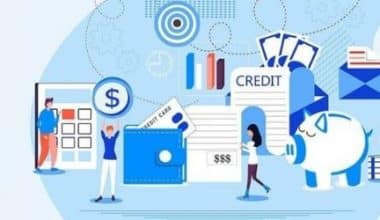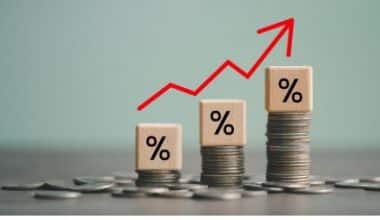Every small business must be flexible, especially during periods of expansion or unsteady cash flow. A business line of credit might be a great option when you require a revolving source of financing that offers both quick access to capital and favorable repayment terms. You may adapt your funding strategy to your ever-changing small business financing needs with the help of a line of credit. They are useful for business owners who know they will need money at some point in the future but don’t know exactly when. It’s a flexible funding option that works best for short-term company needs for things like payroll or supplies. Yet, you might need to choose between a secured and unsecured line when looking into lines of credit for your business. Making this choice requires having knowledge of the differences. Read more to find out more about the best small business line of credit.
Small Business Line of Credit
Small business lines of credit are frequently utilized to cover urgent financial requirements, such as paying employees’ salaries, purchasing new merchandise, or addressing short-term financial difficulties. They aren’t employed for long-term business requirements like purchasing pricey machinery or real estate.
Similar to a small business loan, an unsecured line of credit gives a company access to funds that can be used to cover any unforeseen business expenses. However, unlike a small business loan, there isn’t an initial lump-sum payout that comes with a subsequent monthly payment.
Like a credit card, the funds from a small business line of credit can be used again and again with each annual renewal. After taking out a loan, interest will begin to accrue and any payments made toward the principal balance will reduce the loan total and make the funds once again accessible for borrowing. The lender, like the issuer of a credit card, will meanwhile place a cap on how much you can borrow.
How Business Lines of Credit Work
To begin with, you will generally receive a credit limit for your business line of credit, which you can use to make future borrowings. In contrast to obtaining the entire amount at once in traditional business loans, borrowers are given the option to withdraw what they require over time, called the “draw term.”
In contrast to a conventional business loan, borrowers only have to pay interest on the amount they actually borrow not the entire credit limit. The payback period begins once the draw period ends, which is normally between 12 and 24 months but can last up to five years. Once it reaches the deadline, the borrower will no longer be able to withdraw. Moreover, by a predetermined date, which may be anywhere between six months and five years, the borrower is required to repay the entire principal amount plus any applicable interest.
Instead of getting funds in a flat sum, as with a small business loan, a business line of credit gives owners of small businesses the flexibility to borrow money as needed. Borrowers only have to pay interest on the money they actually use, not the total credit line.
Basically, lines of credit for businesses come in two varieties:
#1. Secured.
To qualify for a secured business line of credit, a borrower must put up valuable assets as collateral, such as accounts receivable or inventory, that the lender can sell off if the borrower defaults on loan payments.
#2. Unsecured.
You do not need to offer collateral in order to obtain an unsecured business line of credit. A lender may, however, demand a personal guarantee, in which case you agree to take on personal liability for loan repayment in the event that the company is unable to make payments. Your personal credit may also be impacted by this.
Unsecured Business Line of Credit
The primary advantage of establishing a business line of credit is instant access to working capital. Generally, most firms put this money toward paying employees and buying supplies or perhaps expanding their stock. In the off-season, many cyclical firms rely on an unsecured business line of credit to keep their operations afloat.
However, most business lines of credit are extended to smaller enterprises as unsecured loans, meaning no collateral is necessary (assets that the lender can sell if you default on the debt). In many cases, the maximum amount you can borrow from an unsecured business line of credit is $100,000, while the interest rate is variable.
An unsecured line of credit is a fantastic option for a small business searching for ways to better manage cash flow. This is basically because, unlike many small business loans, it is not tied to a specific purpose or transaction. One can use a small business credit card, a company checking account, or even a mobile banking app to withdraw money from the line of credit.
How to Get a Business Line of Credit
It’s simple to apply for or get a business line of credit. Following your decision, you will either complete an application online or with a business banker. In addition, you’ll require corporate assets like commercial real estate if you’re interested in pledging collateral in exchange for a cheaper interest rate.
To be ready to get a business line of credit, you should collect your financial accounts, articles of incorporation, business and personal tax records, and other legal documents and keep them in handy.
However, to be approved for a business line of credit, you will need to meet the specific conditions of each lender. While the procedure to qualify for a business line of credit will vary on the needs of particular lenders, typical requirements include;
- Individual Credit Score Above 600
- High levels of liquid assets or high levels of cash flow.
- Age of your company and how long it has been profitable. That is, how long you’ve been in business and how long you’ve been profitable
- Sufficiently-thought-out business plan
A business line of credit is available from both brick-and-mortar banks and virtual lenders. When it comes to loans, banks typically provide the best rate. However, they also have more stringent standards and take longer to process applications. If you aren’t approved for a loan through a brick-and-mortar bank, you may want to look into online lenders, who may be more willing to lend to you because of your lack of traditional credit history.
What Is a Business Line of Credit For?
With a line of credit, a company can borrow up to a predetermined amount while only paying interest on that amount. It differs from a traditional loan in which you would get a lump sum of cash and make interest-bearing monthly installments to repay the debt.
How Does a $10000 Line of Credit Work?
Hence, if your credit line has a $10,000 maximum, you are free to use all of it as needed. You can still use the remaining $5,000 if you have a $5,000 balance at any moment. You can get back the entire $10,000 if you pay off the $5,000.
Can I Withdraw Cash From My Line of Credit?
A line of credit gives you access to a fast stream of funds that you can use for a variety of purposes within your organization. You are permitted an unlimited number of cash withdrawals from the line of credit up to the credit limit that has been established for you.
Best Business Line of Credit
#1. American Express Business Blueprint™
- Loan amounts: $2,000 to $250,000
- Monthly costs: Dependent upon loan length
- Credit score requirement: 640
In December 2021, American Express Business BlueprintTM (previously Kabbage from American Express and Kabbage FundingTM) introduced the American Express® Business Line of Credit. American Express provides small businesses with a variety of services to help them better manage their cash flow.
Owners of businesses can qualify for lines of credit ranging from $2,000 to $250,000. Repayment lengths can be six, twelve, or eighteen months.
The available line of credit Customers generally pays a monthly loan fee as long as their debt is unpaid. The APR for a six-month loan is between 2% and 9%, for a twelve-month loan it is between 7.5% and 18%, and for an eighteen-month loan, it is between 15.75% and 27%.
In addition to a credit line, American Express Business Blueprint offers a variety of resources that can help small business owners succeed.
PROS
- American Express backs it up.
- No early termination fee
CONS
Recurring charges for delinquent balances
Personal guarantee is a necessity.
#2. OnDeck
- Loan amounts: $6,000 to $100,000
- APR: Begin with 29.9%
- Credit score requirement: 625
Since its inception in 2006, OnDeck has grown to become a market leader in the business lending space. Presently, they have provided $14 billion in loans to small companies.
A business line of credit from OnDeck can be obtained for anywhere between $6,000 and $100,000, with a repayment term of 12 months that begins anew after each withdrawal.
In the states of Nevada, North Dakota, and South Dakota, OnDeck does not provide loans to businesses. Even though it provides loans to more than 700 different sectors, it does not serve all of them.
PROS
- Credit lines up to $100,000
- Quick funding
- Low required minimum credit score
CONS
- Minimum annual revenue requirement of $100,000
- Should have been in business for at least a year.
- Does not make loans to companies in North Dakota, South Dakota, or Nevada
#3. BlueVine
- Loan amounts: $6,000 to $250,000
- APR: 6.2% or less
- Credit score requirement: 625
BlueVine is a nationwide provider of financing solutions for small businesses using financial technology. It is a leading provider of business checking and credit card accounts. As of the end of the year 2021, BlueVine will no longer provide invoice factoring services.
Lines of credit for startups can typically be obtained for amounts ranging from $6,000 to $250,000. BlueVine’s Flex 6 payment plan spreads out payments for startups over 26 weeks, with each payment due every week. Also, after 45 days of timely payments on Flex 6, you may be eligible for an increase in your credit limit. BlueVine also has a Flex 12 structure that isn’t ideal for startups because it requires at least three years of operation.
The line of credit offered by BlueVine also comes with a weekly or monthly fee. Withdrawals from a credit line typically cost 7% per month, or 1.7% weekly.
PROS
- Those who run a business must have done so for at least 24 months to qualify.
- Credit lines up to $250,000
- Low credit score threshold
CONS
- There is no mobile app for its credit line.
- Minimum monthly income required
- North and South Dakota, Puerto Rico, and other US territories do not offer this service to businesses.
#4. Wells Fargo
- Loan amounts: $5,000 to $100,000
- APR: Prime plus 1.75% to Prime plus 9.75%
- Credit score requirement: Wells Fargo withholds this information from the public.
In addition to its prime line of credit, its small business advantage line of credit, and its unsecured line of credit, Wells Fargo provides its commercial clients with two other credit options. We’ve included a brief summary of the other two options, but we’re emphasizing the unsecured line of credit because it’s the best for most small businesses.
Wells Fargo’s unsecured business line of credit is a good option for small business owners who prefer to work with a brick-and-mortar bank rather than a digital one in order to supplement cash flow, cover daily expenses, expand, or seize unforeseen business opportunities.
Wells Fargo offers business owners an unsecured line of credit with payment terms as low as monthly with a maximum loan amount of $100,000. While Wells Fargo’s annual fee is $95 or $175, it’s waived for the first year, making it the priciest line of credit on our list. The annual fee for a line of credit between $10,000 and $25,000 is $95, while the fee for a line of credit between $25,000 and $100,000 is $175.
If your company has been open for less than two years, you may qualify for a Small Business Advantage line of credit from Wells Fargo (guaranteed by the U.S. Small Business Administration). However, credit lines typically range from $5,000 to $50,000. Additionally, a Prime Line of Credit, a secured line of credit between $100,000 and $500,000, is available to established businesses with annual sales between $2 and $5 million. Unfortunately, this isn’t useful for most small businesses.
PROS
- No collateral is needed
- Accessible low-interest rates
- Rewards available
CONS
- Annual charge after the first year,
- A minimum of two years in business is necessary
#5. Fundbox
- Loan amounts: $1,000 to $150,000
- APR: 4.66% to start
- Credit score requirement: 600
With the help of artificial intelligence, Fundbox is a business lending platform that streamlines the application, approval, and funding stages. Funds can be transferred as soon as the following business day, and approvals take just three minutes.
Fundbox gives potential borrowers two different ways to finance their businesses. Apply for a business line of credit up to $150,000 with 12 or 24-week repayment terms. As you make payments on your line of credit, the number of available credits increases.
PROS
- Get a result in three minutes.
- Low minimum credit score requirement
- Loans funded the following business day
CONS
- There is only a short-term repayment terms option
Is a Business Line of Credit a Loan?
A business line of credit is an adaptable loan that functions similarly to a credit card for companies. Businesses can access their available credit lines as needed, with interest paid only on the amount actually drawn. When borrowers pay back their loans, the pool of accessible credit expands.
Can a Business Account Get a Line of Credit?
As opposed to a traditional loan, a small business line of credit functions more like a credit card. A business can use the funds from an unsecured line of credit the same way it would use the funds from a small business loan: on any legitimate business expense.
Conclusion
A line of credit for a business is an excellent option for financing short-term operational expenses like payroll or inventory. As long as you don’t go over the limit on your credit card, you are free to withdraw as much cash as you require. After then, you have the option of either paying off the remaining sum or making the minimum required monthly payment.
Related Articles
- UNSECURED PERSONAL LOAN: Loan Without Collateral
- UNSECURED DEBT: Definition, Types, and Examples
- BlueVine: Is It Legitimate? (Lines of Credit & Factoring Review)
- UNSECURED BUSINESS FINANCE: What it is and How it works
- The 2023 Best Business Loans For Startups (Updated)






